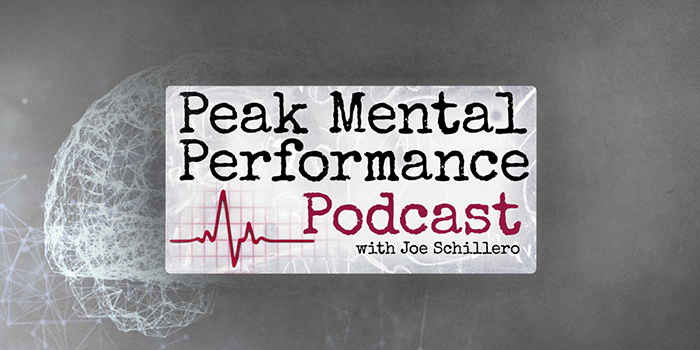
When I first heard about the idea of using electrical brain stimulation to improve performance, my immediate reaction was fairly skeptical. When I started digging into the research, however, I found that transcranial direct current stimulation has actually been used for years (the first example being 200 years ago)1 and has a large body of research surrounding its use for psychiatric conditions, cognitive function2, and more recently stimulation of the brain’s motor cortex for athletic performance3,4.
If you’ve never heard of it before, transcranial direct current stimulation (or TDCS) is a non-invasive brain stimulation treatment that uses a constant, low-level electrical current to stimulate specific parts of the brain (location-dependent on the desired effect)5. For the purposes of athletic performance, stimulation of the brain’s motor cortex has shown potential for improving motor learning, muscular contraction potential, and prevention of neuromuscular fatigue6. Research on these effects in elite-level athletes has just started in recent years (with much of past research being in stroke victims and other clinical patients), but the evidence thus far is promising. Particularly with the favorable safety profile of TDCS, it has slowly gained popularity with various athletes and coaches over the past few years.
RECENT: Peak Mental Performance Podcast — Brain Benefits of the Ketogenic Diet
There are a number of different TDCS devices on the market, but one of the more popular consumer devices for athletic use is the Halo Sport Neurostimulator by Halo Neuroscience. While many TDCS devices feature basic electrodes that the user places in various locations themselves, the Halo Sport device is built into a pair of headphones, putting the electrodes over the location of the motor cortex by design. Their device is one of the more expensive on the market, but the more user-friendly design (versus having wires and electrodes hanging from different parts of the athlete’s skull) has packaged TDCS in a way that is more palatable and less intimidating to the average person. Halo Neuroscience’s device is currently being used by a number of sports teams (including the San Francisco Giants and U.S. Olympic Ski Team), as well as a number of individual athletes at the Olympic and professional level.
Because of my interest in neuroscience, and what I knew already about how big of a component neuromuscular function is in strength (particularly in the sport of powerlifting), I was interested in talking to someone at Halo about their device and TDCS in general. Dr. Brett Wingeier (co-founder and CTO of Halo Neuroscience) is a biomedical engineer and neuroscientist who designed the Halo Sport device after years of working on medical devices (and creating the first implantable brain device for epileptic seizures). In our conversation, we discuss the science behind TDCS and his device specifically.
By the minute:
- (1:08) What is Transcranial Direct Current Stimulation?
- (3:10) What led Dr. Wingeier from the medical field to designing a product for athletic performance?
- (6:30) Is TDCS safe?
- (9:00) The different ways electrical stimulation benefits movement
- (11:17) How much of physical performance is neurological?
- (13:33) How can an athlete best use TDCS in training?
- (15:35) Are there certain sports that benefit more than others?
- (17:43) Will Halo Neuroscience ever expand into other areas of brain stimulation outside of athletics?
- (24:57) Is there application of TDCS for youth athletes?
- (26:45) How about for the aging population?
In addition to my conversation with Dr. Wingeier, Halo Neuroscience asked if I would like to try their Halo Sport device in my training for six weeks to give my honest thoughts on it. In addition to my thoughts here, I documented my training over the course of the six weeks in my elitefts training log so you can see exactly how I trained (and my training numbers) during that time. Now, I’ll be the first to remind everyone that this is not a controlled trial by any means, so take everything from my experience with a grain of salt. I do feel, however, that I can give a good representation of my experience with the technology and the pros and cons.
Based on what I knew about the technology, I was interested to see how utilizing the device would impact a few different variables in my training:
- Rate of Increase for Rep PRs — How frequently I’m hitting increased rep counts on my top-end sets in training for primary movements
- Rate of Increase for Training Maxes — How frequently I’m able to increase my training maxes that my percentages are based on
- Time to Reach Optimal Performance in Each Training Session — As powerlifters we’ve all seen how it takes a number of sets to get things firing on all cylinders; I wanted to see if this time would be shortened
- Pre-Existing Injury Pain/Performance Restriction — With my hip joint injuries, I typically have trouble with pain and muscular function at times in squatting, so I wanted to see if this would be affected from better neuromuscular function
Because of the neuromuscular effects of TDCS, I also wanted to see if I could amplify the effects of post-activation potentiation through utilizing accommodating resistance (in the form of bands) on all my warm-up sets leading up to my top set. Post-activation potentiation is the training phenomenon in which the force exerted by a muscle is increased due to its previous contraction7. So, theoretically, if neuroplasticity and neuromuscular contraction potential is increased by the Halo Sport’s TDCS, then the compensatory acceleration used when training against bands during work-up sets would lead to an increased strength output during the top set (which I do for as many reps as possible and go for rep records). It may sound complex, but really it was just a matter of adjusting my percentages down and using bands on all my work-up (and down sets). How I did this is all outlined in my training logs.
How I Used the Halo Sport Device
One of the reasons I was so open to trying the device is because it essentially doesn’t affect how you have to organize training. The electrodes are built into a pair of headphones, so you just put the headphones on (after spraying some water on the electrodes) and you’re good to go. The “neuropriming” period is 20 minutes, and the effects of increased neuromuscular function are supposed to last for about 60 minutes following that. So I would wear the device for the 20 minutes I did my RPR warm-up and basic movements, and then be set to go for my work sets after getting the rack set up. Technically, if you didn’t want to wear the headphones after the 20-minute time frame, you don’t have to (which can be beneficial if doing a particular movement where headphones would get in the way).
My Training Results
As I mentioned earlier, this certainly wasn’t a controlled trial, which means I can’t say for certain which training effects were influenced specifically by TDCS. But I can identify trends that occurred during this six-week timeframe that differ from training in the time before this trial.
Increased Training Maxes
My training works in three-week waves, and typically if things are going well I’m able to increase two waves in a row before starting to have performance, recovery, or rep counts decrease. Then I reduce training maxes down (two steps forward, one step back). During this six-week period, I was able to increase my training maxes not only both waves but also increase a third wave as well. I only increase my training maxes if I’m getting at least three to five extra reps over the prescribed number on my top sets, and I’ve been steadily exceeding that.
Consistent Rep PRs
In similar fashion to 5/3/1, my training is based on rep PRs. Historically when training is going well I’ll hit rep PRs every other week or every two out of three weeks on occasion. The entire six weeks of this training trial I hit rep PRs on every top set of each movement, outside of one or two times I purposefully just did the required reps.
Increased Strength at Lower Bodyweight
I recently adjusted my nutrition to reduce my bodyweight in preparation to compete at 198 pounds (as opposed to the 220-pound weight class I’ve historically competed in) and have been training at a bodyweight of about 205 pounds. This is the lightest I’ve ever trained, and towards the end of this six-week period I began hitting rep PRs on squat from when I was 220 pounds, which I’m very pumped about.
Reduced Warm-Up Time and Reduced Hip Pain
With my current work schedule, I’ve been working to keep my training sessions to about 60 to 90 minutes (including warm-up). Normally the toughest part about warming up is the time it takes to be able to squat and deadlift without my hip bothering me. During this six-week period, I’ve had very minimal hip pain, and have been able to go from starting my warm-up to my work sets in about 10 minutes (something I could never do before without risking injury).
Speaking realistically, I know all positive progress is from a combination of variables (programming, mentality, nutrition, recovery, etc.), but based on my experience it seems that the Halo Sport device had a very positive impact on these aspects of my training.
Additional Pros of the Halo Sport Device
Lack of Interference with Normal Training
The biggest concern I have with trying a new piece of equipment or product is if the benefits outweigh the potential ways it could interfere with “regular” training. The nice thing about the Halo Sport product is that it was as simple as wearing a pair of headphones and training normally as I always do.
Ease of Use
There’s not a whole lot to set up or worry about; the headphones connect via Bluetooth to an app on your phone to control the neurostimulation. The pre-set location of the electrodes in the design of the device also prevents having to worry about where you’re placing electrodes on your head.
Additional Cons of the Halo Sports Device
Price
With the product being safe and easy to use, and having some solid research behind it, the price is likely one of the few things that will prevent someone from wanting to try the device.
Bluetooth for Music*
While the headphones have good sound quality, I would like to see Bluetooth built directly into the headphones for music (Halo offers a Bluetooth adapter for about $40, but it would be nice to see this built in).
Noise Elimination of Headphones*
I noticed that the music sounds pretty loud outside of the headphones when wearing them. So it would be nice to see sound kept “trapped” in the headphones better.
*These are obviously unrelated to the primary function (TDCS) of the device, but worth noting regardless since I want this to be as informative as possible.
To summarize, with the ability to implement the Halo Sport TDCS device into training easily and the low number of risks (safety and otherwise), I think using brain stimulation to augment an effective training program can be a great option. As with all training interventions, you have to balance pros and cons to whatever decision you make. If you’re a poor college student and can’t afford to be spending money on a device like Halo Sport when your money should be going towards groceries, then I obviously don’t think it’s something necessary for you to make progress. But if resources allow and you’re looking to maximize all the neuromuscular aspects of your training, based on my experience and research, it seems like a good tool for your toolbox.
Especially as an elite athlete, finding a way to get an extra one percent of performance can be the difference between winning and losing. I will be interested to see where the world of neurostimulation continues to go (as Dr. Wingeier and I discussed), and I’ll be sure to write more about it as the science and technology progress.
Helpful Links
- The Peak Mental Performance Podcast, Episode 19: “Transcranial Brain Stimulation for Athletic Performance.” Feat. Dr. Brett Wingeier
- Halo Sport by Halo Neuroscience
References
- Transcranial direct current stimulation: State of the art 2008. (2008, July 01). Retrieved November 14, 2017, from http://www.sciencedirect.com/science/article/pii/S1935861X08000405
- Fregni, F., Boggio, P. S., Nitsche, M., & Pascual-Leone, A. (2005, May 01). Transcranial direct current stimulation. Retrieved November 14, 2017, from http://bjp.rcpsych.org/content/186/5/446.short
- Banissy, M. J., & Muggleton, N. G. (2013). Transcranial Direct Current Stimulation in Sports Training: Potential Approaches. Retrieved November 14, 2017, from https://www.ncbi.nlm.nih.gov/pmc/articles/PMC3620504/
- Edwards, D. J., Cortes, M., Wortman-Jutt, S., Putrino, D., Bikson, M., Thickbroom, G., & Pascual-Leone, A. (2017, April 25). Transcranial Direct Current Stimulation and Sports Performance. Retrieved November 14, 2017, from https://www.frontiersin.org/articles/10.3389/fnhum.2017.00243/full
- Mennitto, D. (2012, May 22). Transcranial Direct Current Stimulation. Retrieved November 14, 2017, from https://www.hopkinsmedicine.org/psychiatry/specialty_areas/brain_stimulation/tdcs.html
- Angius, L., Hopker, J., & Mauger, A. R. (2017). The Ergogenic Effects of Transcranial Direct Current Stimulation on Exercise Performance. Retrieved November 14, 2017, from https://www.ncbi.nlm.nih.gov/pmc/articles/PMC5306290/
- Lorenz, D. (2011, September). POSTACTIVATION POTENTIATION: AN INTRODUCTION. Retrieved November 14, 2017, from https://www.ncbi.nlm.nih.gov/pmc/articles/PMC3164001/











